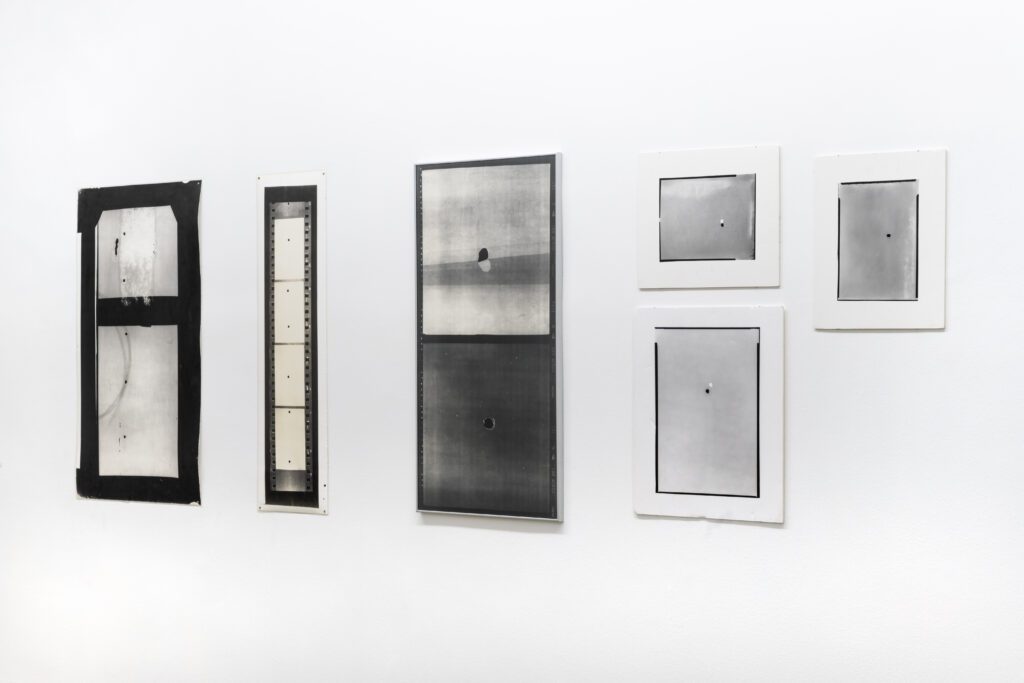Gintautas Trimakas
Responses
2008

In 2008, Gintautas Trimakas created a series of photographs dedicated to his fellow artists Ričards Nemeikšis, Alvydas Lukys, Vytautas Balčytis and Kazė Zimblytė. The unifying motif of the series is a hole in the sky. Both in Trimakas’s earlier photographs and in the light objects that he creates nowadays, the sky and celestial bodies hold significant Importance. In Trimakas’s practice, the ever-changing drawing of the sky’s vault serves as both the most unstable and constant optical lens, relentlessly distributing light during the sun’s daily journey. The sky in Trimakas’s photographs is directly related to cosmic time and processes of a non-human scale. The sky, with its suns, moons and clouds, remains indifferent to our concerns, its movement disregarding national borders, communication infrastructures, economic exchange networks, and the desires of those planning to flee from our planet to another.
In the exhibited photographs, the artist punched a hole in a roll of film before taking pictures of the clear sky. These holes and the punched-out pieces of film become sort of a random, abstract celestial bodies in the backdrop of the sky. This perforation technique actually has two references: first is the “destruction” of an expired document by punching holes in it. Second, it alludes to the practice from the Soviet political oppression period, where people used hole punches and scissors to cut out the faces of exiled or possibly persecuted relatives from photo albums, thus hiding the evidence of their relation in case the album fell into the hands of the security services. Even with the face cut out, the photograph remains. The hole becomes at least a trace of the relation in the destroyed document. Similarly, in the photographs dedicated to Trimakas’s fellow artists, a random hole in the sky serves as at least a trace in the indifferent void of everyday life. However, each dedication carries a personalised motif. For example, the painter Nemeikšis had a fascination with frames, so the pictures dedicated to him feature frame fragments from the camera’s film case. Balčytis, the photographer known for documenting Lithuania’s social landscape, distrusted photographic technology and always took four identical shots of the same view, with the fifth being a photograph of the sky to help him later understand where to cut the film. Trimakas adopted the opposite approach, taking four shots of the sky and the last one with a view in front of him to be cut later. The final dedication of the series was to the painter Edvard Munch, although the photographs have been lost for a long time.